15 Must-See Spots In Juan-les-Pins, France’s Riviera Gem
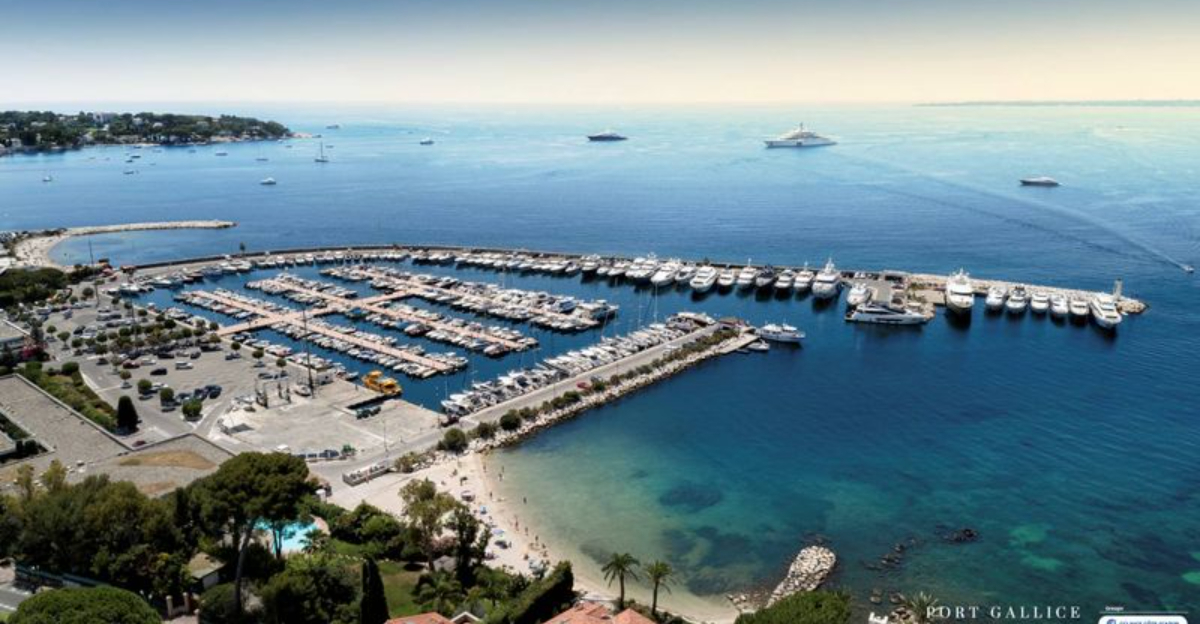
Tucked between the glitter of Cannes and the elegance of Antibes, Juan-les-Pins is a little slice of Riviera magic that often flies under the radar. With golden beaches, pine-shaded promenades, and that laid-back Mediterranean vibe, it’s the kind of place where time slows down—until the sun sets and the jazz bars come alive.
Did you know this coastal gem helped kick off the French Riviera’s golden age? Back in the 1920s, literary legends like F. Scott Fitzgerald lounged here, penning stories and throwing parties that still echo in the town’s breezy spirit.
Whether you’re sipping rosé seaside, catching a jazz set under the stars, or simply soaking up the sun, Juan-les-Pins delivers that effortless mix of elegance and fun. Isn’t it time you discovered this timeless corner of the Côte d’Azur?
1. Pinède Gould: Jazz Under the Pines
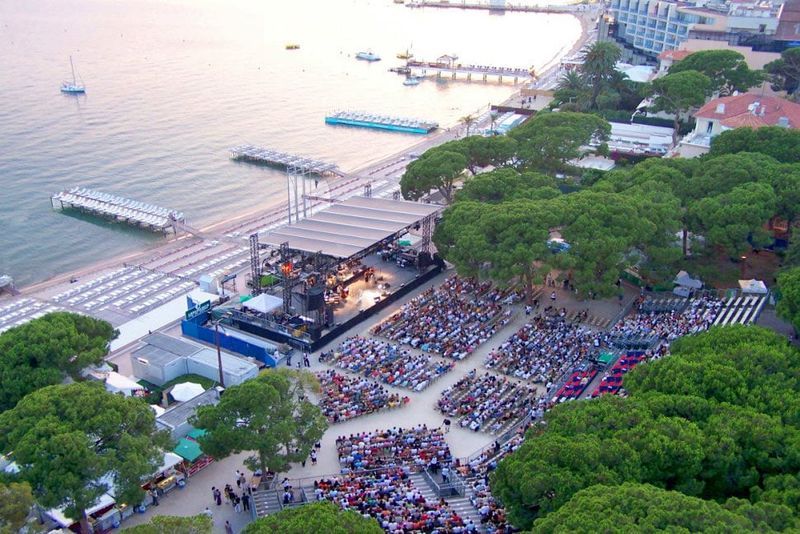
Every July, the pine grove of Pinède Gould transforms into the epicenter of cool as it hosts the world-famous Jazz à Juan festival. The historic venue has welcomed legends like Ray Charles, Miles Davis, and Ella Fitzgerald since 1960.
Walking through these pines, you can feel the musical heritage in the air. Bronze plaques embedded in the ground display handprints of jazz greats who’ve performed here over the decades.
During non-festival times, this shady park offers a peaceful retreat from the Mediterranean sun. Locals gather for pétanque games while tourists snap photos of the stunning sea views that have inspired musicians for generations.
2. La Plage de Juan-les-Pins: The Iconic Beach Experience
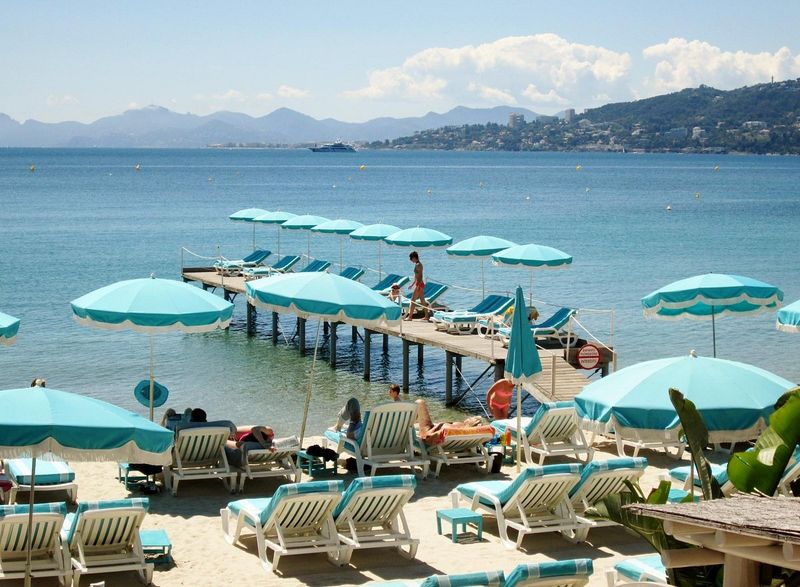
Golden sand stretches along the curved bay, creating the perfect playground for sun-seekers and water enthusiasts alike. Unlike many pebbly beaches on the Côte d’Azur, Juan-les-Pins boasts soft sand that feels luxurious between your toes.
Private beach clubs with colorful loungers and umbrellas dot the shoreline, offering cocktail service right to your sunbed. Meanwhile, the public sections provide a more authentic experience where locals and tourists mingle freely.
The shallow, warm waters make this beach ideal for families with small children. When the afternoon breeze picks up, windsurfers and paddleboarders take to the waves, creating a lively atmosphere against the backdrop of luxury yachts anchored offshore.
3. Le Sentier du Littoral: Coastal Walking Path

Hugging the coastline between Juan-les-Pins and Cap d’Antibes, this scenic pathway offers some of the most breathtaking views on the French Riviera. The trail winds through rocky outcrops, past hidden coves, and alongside magnificent villas that belong to the world’s elite.
Wear comfortable shoes and bring water for this 3.7 km journey. The path varies from easy wooden boardwalks to more challenging rocky sections, but the spectacular vistas make every step worthwhile.
Morning walks reward you with golden sunlight illuminating the limestone cliffs. If you’re lucky, you might spot dolphins playing offshore or glimpse the islands of Lérins in the distance. This natural escape provides a refreshing contrast to the glamorous beaches.
4. Place du Safranier: Hidden Historic Quarter

Tucked away between Juan-les-Pins and Antibes, this charming square represents the heart of the independent ‘Free Republic of Safranier.’ Though not officially recognized beyond local tradition, this tiny ‘micro-nation’ founded in 1966 celebrates Provençal culture with infectious enthusiasm.
Stone houses adorned with colorful shutters and cascading bougainvillea surround the quiet plaza. The narrow cobbled streets leading here barely allow two people to walk side by side, preserving an old-world atmosphere that feels worlds away from the nearby beach resorts.
Visit during one of their traditional festivals to experience authentic local culture. The small community organization hosts feasts featuring regional specialties like pissaladière (onion tart) and socca (chickpea pancake), accompanied by folk music and dancing.
5. Palais des Congrès: Art Deco Masterpiece

Standing proudly on the seafront since 1970, this striking modernist building serves as Juan-les-Pins’ cultural hub. The angular white structure might seem stark at first glance, but its design brilliantly captures Mediterranean light throughout the day.
Inside, the congress center hosts everything from international business conferences to art exhibitions. The main auditorium, with its exceptional acoustics, becomes a key venue during the annual Jazz à Juan festival.
Don’t miss the collection of music memorabilia displayed in the lobby, including signed photographs of jazz legends who’ve performed here. The panoramic terrace offers spectacular views across the bay to the Esterel mountains – perfect for sunset photos that capture the Riviera’s famous golden light.
6. Villa Eilenroc: Aristocratic Splendor
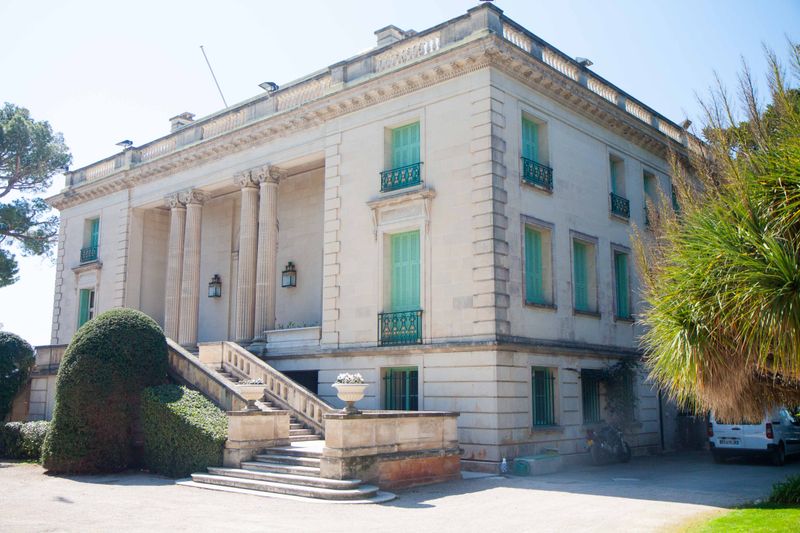
Perched on the tip of Cap d’Antibes, this 19th-century mansion represents the epitome of Belle Époque luxury. Built in 1867 for the Dutch aristocrat Hugh Hope Loudon, the villa’s name is actually ‘Cornelie’ (his wife’s name) spelled backward.
Marvel at the elegant neoclassical architecture designed by Charles Garnier, the same architect who created the Paris Opera House. The interior preserves period furniture, art, and decorative items that transport visitors to a bygone era of Riviera opulence.
The surrounding 11 acres of gardens steal the show with Mediterranean plants, rose gardens, and olive groves. Follow the path down to the sea for magnificent views of the coastline. The villa hosts classical music concerts in summer, allowing visitors to experience the estate as its wealthy owners once did.
7. Musée Peynet: Celebrating the Cartoonist of Love
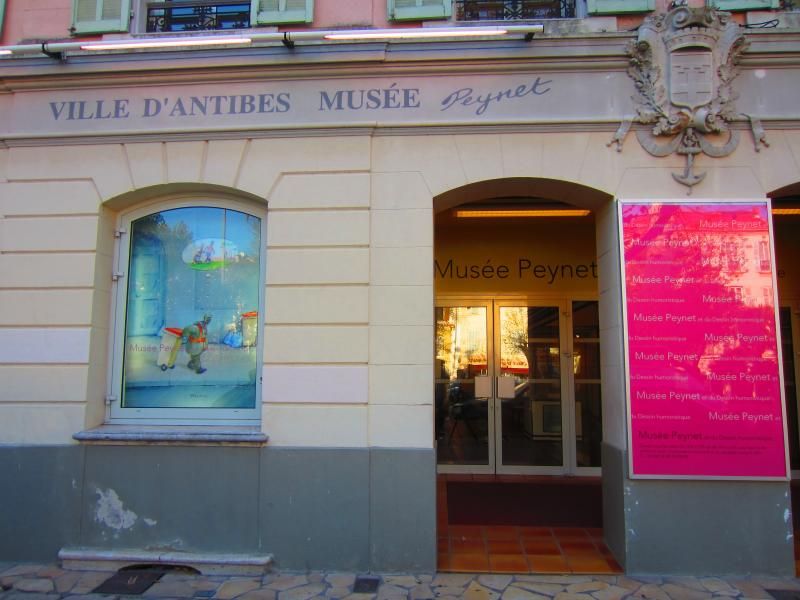
Housed in a charming 1930s building near the beach, this small museum celebrates the work of Raymond Peynet, whose whimsical illustrations captured French romantic sensibility. His famous ‘Lovers’ cartoon characters became cultural icons in the mid-20th century.
The collection showcases over 100 original drawings, posters, and sculptures by the artist who spent much of his life in Juan-les-Pins. Peynet’s distinctive style – featuring a poet and his beloved under a bandstand – appears on everything from postage stamps to perfume bottles.
Though modest in size, the museum offers a delightful glimpse into French popular culture. The gift shop sells reproductions and memorabilia that make perfect souvenirs. Visit on Wednesday afternoons when local artists sometimes demonstrate techniques inspired by Peynet’s distinctive style.
8. Le Provençal: Ghost of the Roaring Twenties
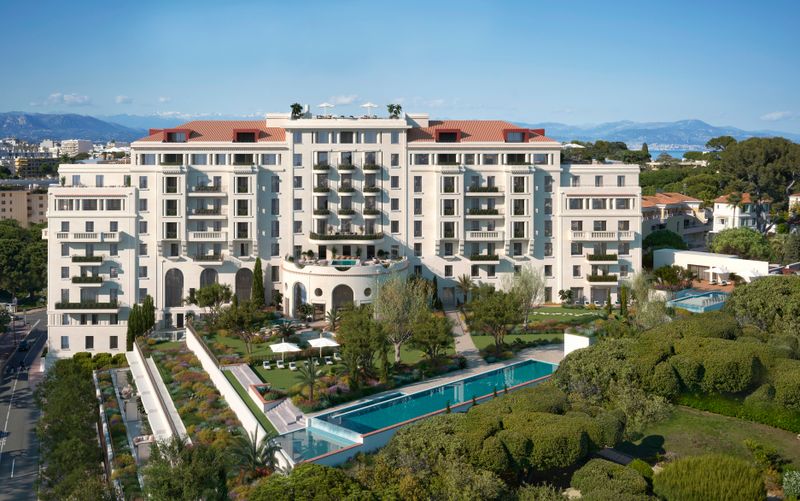
Standing like a sleeping giant on the beachfront, this enormous white Art Deco hotel represents Juan-les-Pins’ golden age. Though closed since 1975, Le Provençal’s imposing facade continues to fascinate visitors with its faded glamour.
During the 1920s and 30s, this legendary establishment hosted F. Scott Fitzgerald, Ernest Hemingway, and countless celebrities. The hotel’s lavish parties became the inspiration for scenes in Fitzgerald’s ‘Tender is the Night.’
While you can’t enter the building today, walking around its perimeter offers a glimpse into the past. Peer through broken windows at grand staircases and remnants of marble floors. Local guides offer historical tours that bring to life the jazz-age stories of champagne-fueled celebrations and scandalous love affairs that unfolded behind these walls.
9. Marché Provençal: Flavors of the South
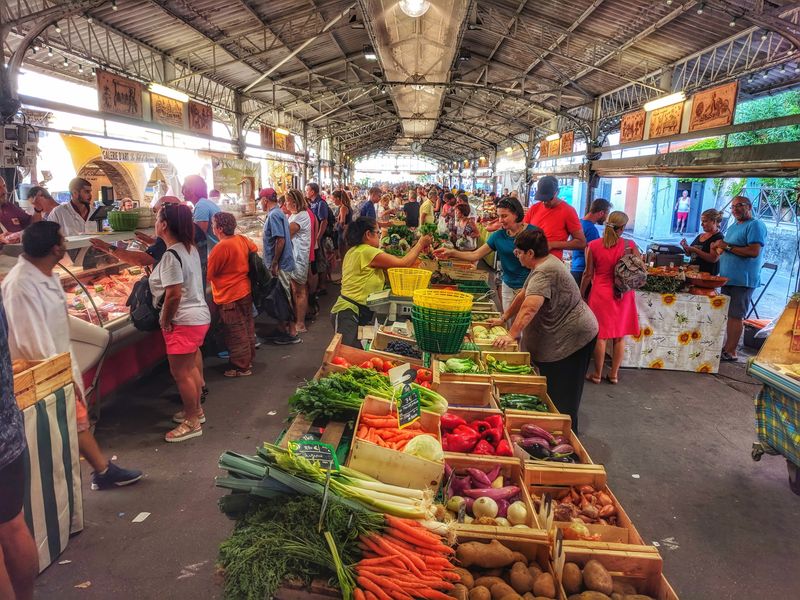
Wander through this vibrant market in nearby Antibes to experience the authentic tastes and scents of Provence. Held every morning except Monday, the covered marketplace buzzes with local farmers selling seasonal produce, fragrant herbs, and regional specialties.
Colorful displays of sun-ripened tomatoes, purple artichokes, and glossy olives tempt photographers and food lovers alike. Vendors encourage tasting their products – from tangy goat cheeses to honey infused with local lavender.
Arrive early (before 9am) to avoid crowds and watch restaurateurs selecting the day’s ingredients. The market extends outdoors in summer, adding stalls selling handcrafted soaps, woven baskets, and Provençal textiles. Don’t leave without trying socca, the region’s beloved chickpea pancake cooked on massive cast-iron pans.
10. Parc de la Pinède: Handprints of Jazz Legends
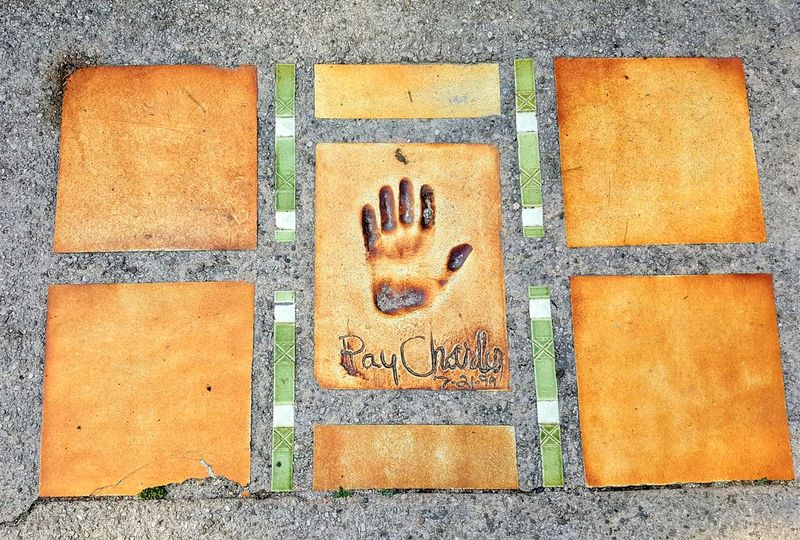
Follow the musical trail through this shady pine park where bronze handprints of jazz greats create a walk of fame unlike any other. Since 1960, musicians performing at the Jazz à Juan festival have left their literal mark here.
Find the hands of Ray Charles, Dizzy Gillespie, and modern stars like Diana Krall embedded in the ground. Each plaque includes the artist’s signature and performance date, creating a tangible timeline of the festival’s prestigious history.
The park itself offers welcome shade during hot summer days. Ancient pine trees create a natural canopy over benches where you can rest while enjoying sea views. During festival season, the atmosphere becomes electric as music drifts through the trees and impromptu jam sessions sometimes break out among visitors.
11. Bistrot Terrasse: Legendary Seaside Dining
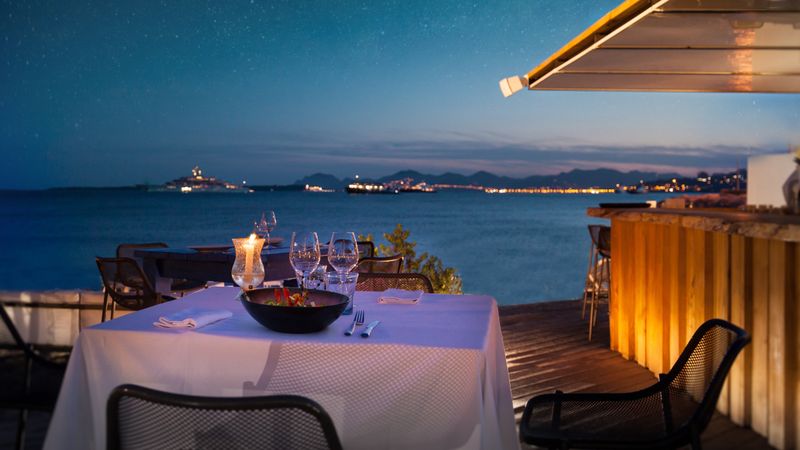
Perched directly on the beach since 1950, this family-run restaurant represents the soul of Juan-les-Pins’ culinary scene. White tablecloths flutter in the sea breeze as waves gently lap just feet from your table.
The menu celebrates Mediterranean classics with an emphasis on fresh seafood. Their bouillabaisse (traditional Provençal fish stew) has been made using the same secret recipe for three generations. Watch fishing boats return to shore as you sip local rosé wine under striped umbrellas.
Despite its prime location, the restaurant maintains reasonable prices compared to flashier establishments nearby. Reservations are essential during summer months, especially for sunset tables. Request a spot on the front row for an unforgettable dining experience where your feet might get kissed by waves during high tide.
12. Square Albert 1er: Belle Époque Heart
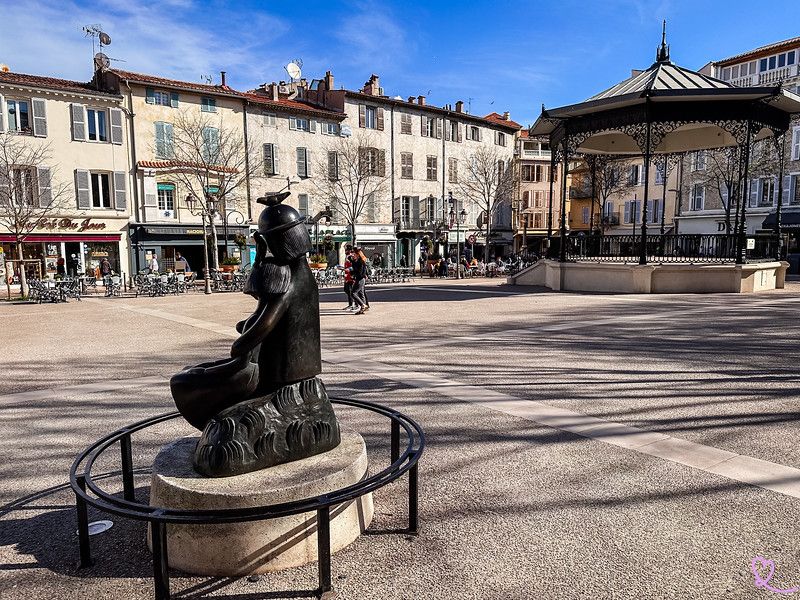
This elegant square serves as Juan-les-Pins’ social center, where locals gather throughout the day. Surrounded by historic buildings with ornate facades, the plaza retains the atmosphere of the Belle Époque period when the resort first became fashionable.
Mature palm trees provide patches of shade for the many café terraces that spill onto the square. Order a pastis (the anise-flavored local spirit) and watch the perpetual game of pétanque played by retired gentlemen in the corner.
The square transforms throughout the day – from morning market to afternoon social hub to evening performance space. Street musicians often set up here in summer evenings, creating an impromptu concert atmosphere. The beautiful 19th-century bandstand in the center hosts occasional classical and jazz performances that attract crowds of appreciative listeners.
13. Villa Saint-Louis: Fitzgerald’s Creative Haven
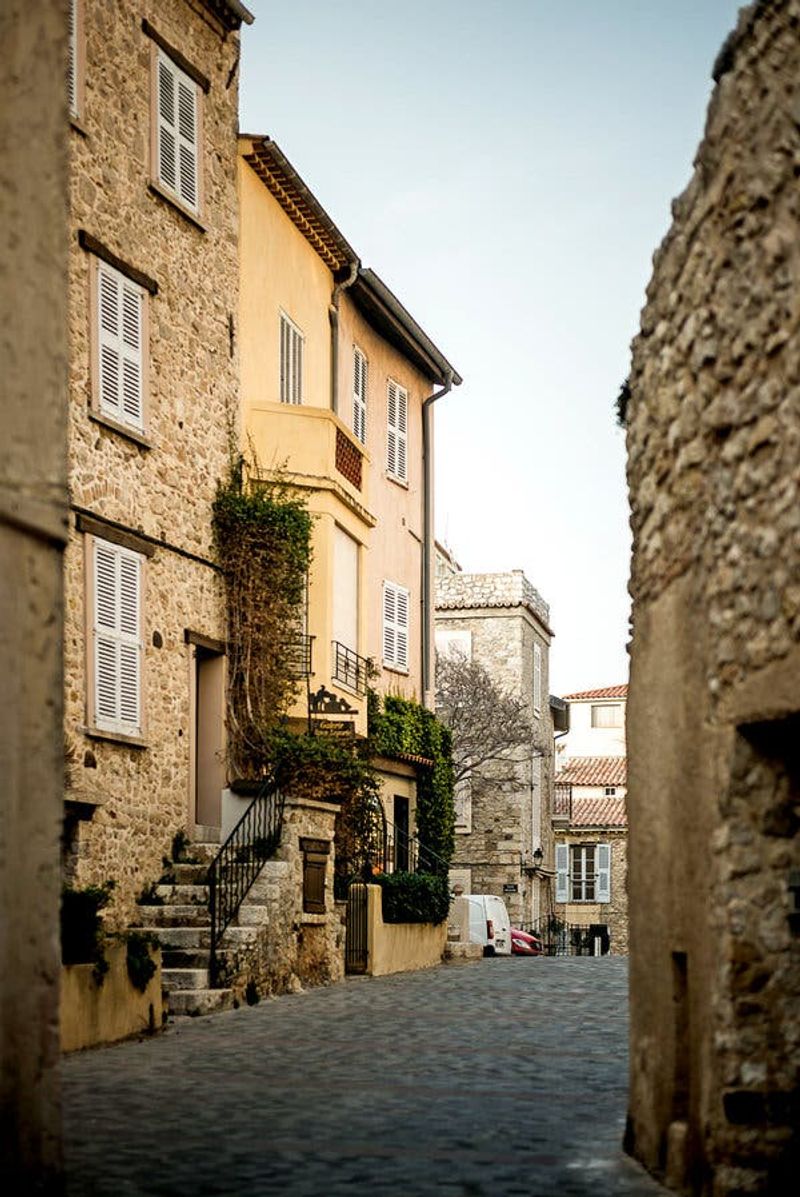
Literary pilgrims shouldn’t miss this unassuming villa where F. Scott Fitzgerald lived during the summer of 1926 with his wife Zelda. Though privately owned and not open to the public, you can view the exterior of this creative sanctuary where Fitzgerald worked on ‘Tender is the Night.’
The modest white house with blue shutters stands in stark contrast to the grand mansions nearby, reflecting the writer’s complicated relationship with wealth. A small plaque commemorates the famous American author’s residence.
Bring a copy of Fitzgerald’s work to read on the beach across the street – the same shoreline that inspired his descriptions of the French Riviera. Walking tours focused on the ‘Lost Generation’ writers often stop here, providing fascinating context about the literary and artistic community that flourished in Juan-les-Pins during the interwar period.
14. Port Gallice: Yachting Paradise
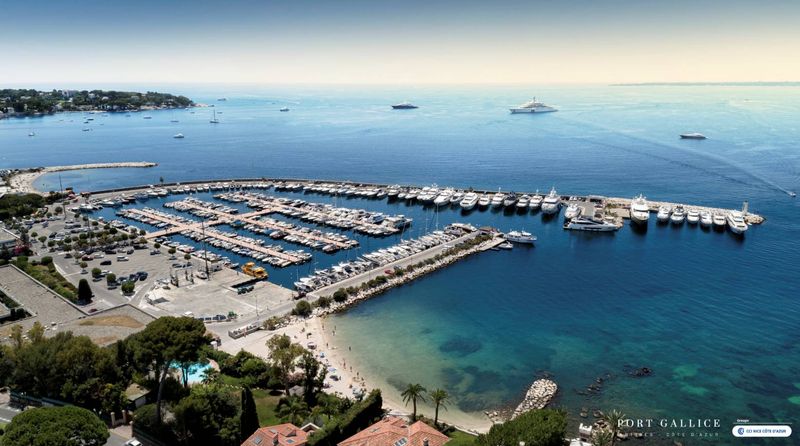
Nestled in a protected cove between Juan-les-Pins and Cap d’Antibes, this charming marina showcases the Riviera’s sailing culture without the ostentation of larger ports. Approximately 525 berths accommodate everything from modest fishing boats to sleek yachts.
Stroll along the quay at sunset when the boats’ masts create a forest of silhouettes against the colorful sky. The port’s design, with its curved seawall, provides excellent protection from Mediterranean winds while offering spectacular views of the Lérins Islands offshore.
Several waterfront restaurants serve excellent seafood directly from local fishing boats. Watch the daily catch being unloaded while enjoying a glass of chilled white wine. The port also houses sailing schools where visitors can arrange lessons or boat rentals to experience the Mediterranean from a different perspective.
15. Chapelle Saint-Jean: Spiritual Sanctuary

Hidden among pine trees on a small hill, this 12th-century stone chapel offers a peaceful retreat from the bustling beaches. The simple Romanesque building served as a lookout point against pirate attacks during medieval times.
Inside, whitewashed walls and wooden beams create an atmosphere of humble devotion. Soft light filters through narrow windows, illuminating ancient frescoes that have survived centuries. Though small, the chapel contains remarkable artistic elements, including a wooden statue of Saint John from the 16th century.
The surrounding grounds provide panoramic views of the coast and mountains. Local families still celebrate baptisms and weddings here, continuing traditions that span generations. Visit during the annual Saint John’s Day celebration (June 24) when a procession with candles winds its way up the hill at sunset.
